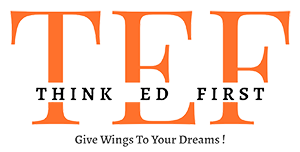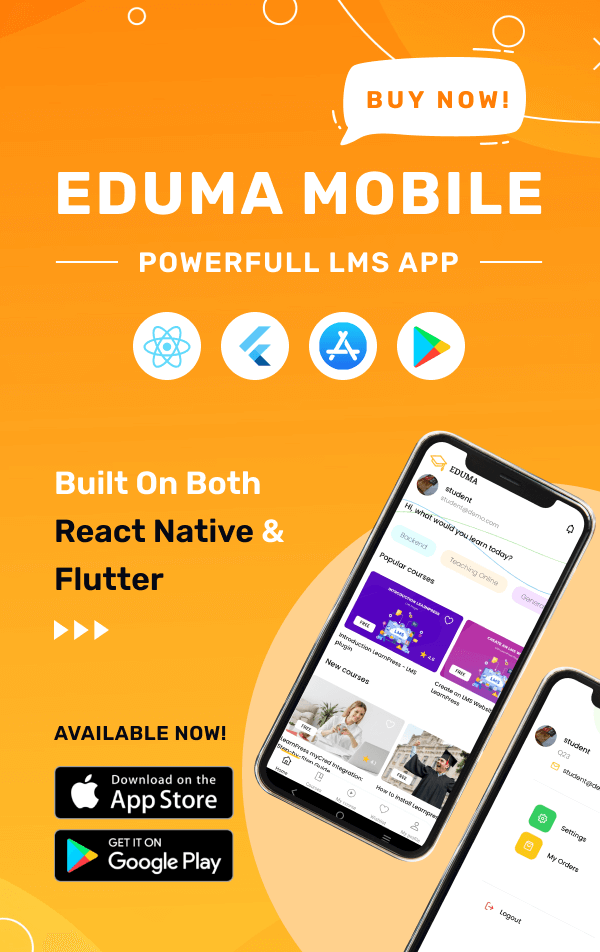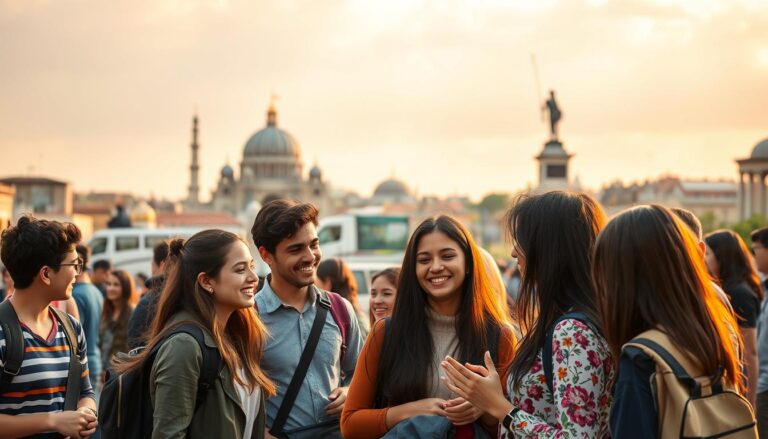Many aspiring doctors dream of studying at a top-tier medical university but often worry about the costs. What if we told you there’s a way to achieve this dream without breaking the bank? Our guide dives into the complete fee breakdown for studying medicine abroad, focusing on one of the most affordable and high-quality options available.
With modern facilities and globally recognized degrees, this destination offers excellent clinical training opportunities. We’ve compiled the latest updates on tuition, hostel, and living expenses to help you plan effectively. Whether you’re curious about affordability or seeking clarity on costs, this guide has you covered.
Introduction to MBBS in Russia 2025
With rising competition in India, students are exploring international options for medical studies. Over 4,000 Indian students travel abroad annually, and more than 50% choose this destination for its affordability and quality education. The ease of admission and modern infrastructure make it a top choice for aspiring doctors.
Our Journey into Affordable Medical Education
Studying medicine abroad has become a practical solution for many Indian students. The intense competition for limited seats in India often leaves talented candidates without options. In contrast, international universities offer a streamlined admission process and globally recognized degrees.
Affordability is a major factor. The cost of education in this destination is significantly lower compared to private institutions in India. With tuition fees starting at 2-4 Lacs INR annually, it’s a viable option for many families.
Why Choose Russia for MBBS?
This destination stands out for its quality academic training and support for international students. Over 90 medical universities welcome students from around the world, offering bilingual programs in English and Russian. This ensures a smooth learning experience for non-native speakers.
Additionally, the increasing enrollment of Indian students highlights its popularity. With over 23,000 Indian students currently enrolled, it’s clear that this destination offers both affordability and excellence in medical education.
MBBS in Russia fees 2025
Planning your budget for medical studies abroad can make your dream more achievable. For Indian students, understanding the fee structure is essential to ensure affordability and financial clarity. The total cost includes tuition, hostel, and living expenses, which vary depending on the university and location.
Understanding tuition, hostel, and living costs
Tuition fees for medical programs range from INR 2.4 Lacs to 5.1 Lacs per year. Universities like Bashkir State Medical University and Crimea Federal University offer competitive rates. Hostel costs are approximately INR 25,000 annually, while monthly living expenses average INR 12,000.
When compared to private institutions in India, these fees are significantly lower. For example, the total investment for a 6-year program in Russia is often less than the annual tuition at some Indian private colleges. This makes it a cost-effective option for many families.
Additionally, the cost of living in Russia is about 58% lower than in Western countries. This includes food, transportation, and other daily expenses. Such affordability, combined with quality education, makes it a preferred choice for Indian students.
Overview of Russian Medical Education
Global recognition and affordability are key factors when selecting a medical university. The Russian medical education system is renowned for its high standards and adherence to international guidelines. Over 90 institutions offer programs that are accredited by global bodies like the NMC and WHO.
These universities provide a structured curriculum that combines theoretical knowledge with extensive clinical training. The program duration is six years, including a one-year internship. This ensures students gain hands-on experience, preparing them for global medical practice.
Accredited Institutions and Global Recognition
Russian medical degrees are widely accepted worldwide. Here’s why:
- Accreditation by NMC, WHO, and other international bodies ensures quality education.
- Universities follow a curriculum aligned with global medical standards.
- Graduates are eligible to practice in multiple countries, including India.
The fee structure is transparent, with costs paid per year. This makes financial planning easier for students and their families. The combination of quality education and affordability makes Russian universities a preferred choice for aspiring doctors.
Fee Structure Breakdown
Understanding the cost structure is crucial for students planning to study medicine abroad. A detailed breakdown of tuition, hostel, and additional expenses helps in making informed decisions. This section provides clarity on the financial aspects of pursuing medical education in a foreign country.
Detailed Tuition Fee Analysis
Tuition fees vary across institutions but remain affordable compared to other countries. For example, Bashkir State Medical University charges approximately INR 2.5 Lacs annually. Similarly, Crimea Federal University offers programs at INR 3 Lacs per year. These costs are significantly lower than private colleges in India.
Here’s a comparison of annual tuition fees at top universities:
| University | Annual Tuition Fee (INR) |
|---|---|
| Bashkir State Medical University | 2.5 Lacs |
| Crimea Federal University | 3 Lacs |
| First Moscow State Medical University | 5 Lacs |
Hostel and Accommodation Fee Insights
Accommodation costs are another key factor. Most universities provide hostel facilities at affordable rates. For instance, hostel fees at Bashkir State Medical University are around INR 25,000 annually. Private apartments may cost between INR 10,000 to 20,000 per month, depending on the city.
Additional expenses include food, transportation, and visa fees. Monthly living costs average INR 12,000, making it a budget-friendly option for students. Transparent fee structures ensure there are no hidden costs, helping families plan effectively.
Comparing MBBS Costs: Russia vs India
Choosing the right destination for medical studies can shape your future career and finances. For Indian students, understanding the financial differences between countries is essential. Let’s explore how costs in Russia compare to those in India.
Tuition fees in Russian state medical universities are significantly lower than in Indian private colleges. For example, annual tuition in Russia ranges from ₹2.5 to ₹6 lakhs. In contrast, private Indian institutions often charge ₹10 to ₹25 lakhs per year.
Living costs in Russia are also budget-friendly. Monthly expenses average ₹12,000, including food, transportation, and accommodation. In India, similar costs can be higher, especially in metropolitan cities.
Here’s a detailed comparison of annual costs:
| Expense | Russia (INR) | India (INR) |
|---|---|---|
| Tuition Fee | 2.5 – 6 Lakhs | 10 – 25 Lakhs |
| Hostel Fee | 25,000 – 1 Lakh | 1 – 2 Lakhs |
| Living Costs | 12,000/month | 15,000 – 20,000/month |
Another advantage is the absence of capitation fees in Russia. Indian private colleges often demand hefty donations, which can add to the financial burden. Russian universities maintain transparent fee policies, ensuring no hidden costs.
For Indian students, the long-term value of studying in Russia is undeniable. Lower costs, quality education, and global recognition make it a wise investment. Explore more about the benefits of MBBS in Russia to make an informed decision.
State Medical Universities in Russia
State medical universities offer a blend of quality education and affordability, making them a top choice for aspiring doctors. These institutions are known for their modern infrastructure, practical training facilities, and consistent government support. They provide an excellent environment for students to thrive academically and professionally.
Leading Institutions for Medical Studies
Several state and federal universities in Russia stand out for their academic excellence and affordable fee structures. These institutions are globally recognized and accredited by bodies like the NMC and WHO. Here are some of the top medical universities:
| University | Annual Tuition Fee (INR) | Key Features |
|---|---|---|
| Kazan State Medical University | 5.5 Lacs | Globally accredited, modern labs |
| Volgograd State Medical University | 4.8 Lacs | Extensive clinical training |
| Bashkir State Medical University | 3.8 Lacs | Affordable hostel facilities |
| Crimea Federal University | 4.1 Lacs | Bilingual programs |
These universities are known for their high passing rates in licensing exams and comprehensive curriculum. They offer practical training opportunities that prepare students for global medical practice. Additionally, their affordable fee structures make them accessible to a wide range of students.
State-run institutions receive consistent government funding, ensuring quality education and modern facilities. This support allows them to maintain high academic standards while keeping costs low. For students seeking a balance between affordability and excellence, these universities are an ideal choice.
Benefits for Indian Students
For Indian students seeking affordable yet high-quality medical education, this destination offers a perfect blend of both. Over 20,000 Indian students are already enrolled, drawn by low tuition fees, modern facilities, and a safe study environment. This makes it a top choice for aspiring doctors.
Affordability and Quality Learning
One of the biggest advantages is the cost-effectiveness. Tuition fees are significantly lower compared to private institutions in India. For example, annual tuition ranges from ₹2.5 to ₹6 lakhs, making it accessible for many families.
Despite the low cost, the quality of education remains high. Universities are accredited by global bodies like the NMC and WHO, ensuring globally recognized degrees. Students also benefit from modern labs and extensive clinical training.
Multicultural Campus and Support Services
Indian students find a welcoming environment with multicultural campuses. Universities offer bilingual programs in English and Russian, easing the transition for non-native speakers. Dedicated support services help students adapt to their new surroundings.
Success stories are common, with many Indian students achieving high passing rates in licensing exams. This highlights the effectiveness of the education system and the support provided.
| Benefit | Details |
|---|---|
| Affordable Tuition | ₹2.5 to ₹6 lakhs annually |
| Quality Education | Accredited by NMC and WHO |
| Support Services | Bilingual programs, student support |
| Exam Success | High passing rates among Indian students |
This destination provides a cost-effective, globally recognized medical education. With its blend of affordability and quality, it’s no wonder Indian students are choosing it in large numbers.
Eligibility Criteria and Admission Process
Understanding the eligibility criteria is the first step toward securing a seat in a top medical university. For Indian students, the process is straightforward and less competitive compared to domestic entrance exams. Here’s what you need to know.
Academic Requirements and NEET
To apply for medical studies abroad, Indian students must meet specific academic and age criteria. Candidates must be at least 17 years old and have completed their 10+2 education with a minimum of 50% marks in Physics, Chemistry, and Biology (PCB).
A valid NEET scorecard is mandatory for Indian students. The NEET exam ensures that candidates meet the basic standards required for medical education. This requirement applies to all Indian students, regardless of the destination country.
Required Documents
To confirm eligibility, students must submit the following documents:
- 10th and 12th-grade mark sheets.
- NEET scorecard.
- Passport copy.
- Birth certificate.
- Medical fitness certificate.
Straightforward Admission Process
The admission process is simple and transparent. Unlike highly competitive entrance tests in India, international universities focus on academic performance and NEET scores. Applications are processed on a first-come, first-served basis, ensuring fairness.
For example, institutions like Perm State Medical University offer a streamlined process with no additional entrance exams. This makes it easier for students to secure a seat without unnecessary stress.
Tips for a Successful Application
To ensure a smooth application process, follow these tips:
- Start early to gather all required documents.
- Double-check the eligibility criteria for your chosen university.
- Submit your application before the deadline to avoid last-minute issues.
With the right preparation, securing admission to a state medical university becomes a hassle-free experience. This is why many Indian students choose this path for their medical education.
Document Requirements for MBBS in Russia
Preparing the right documents is a critical step for securing admission to a federal university. Accurate and complete paperwork ensures a smooth application process and avoids unnecessary delays. Here’s a detailed guide to the essential documents you’ll need.
Academic transcripts are the foundation of your application. You’ll need your 10th and 12th-grade mark sheets, showing a minimum of 50% in Physics, Chemistry, and Biology. These documents must be attested and translated into Russian if required.
A valid NEET scorecard is mandatory for Indian students. This ensures you meet the basic eligibility criteria for medical education abroad. Make sure your scorecard is up-to-date and matches the university’s requirements.
Your passport is another crucial document. It must have a minimum validity of 18 months from the date of application. Keep multiple copies of your passport to avoid delays in case of loss or damage.
Other important documents include:
- Birth certificate for age verification.
- Medical fitness certificate to confirm your health status.
- HIV/AIDS test results as part of the health screening process.
- Recent passport-sized photographs for identification purposes.
Visa-related documentation is equally important. Once you receive an invitation letter from the federal university, you’ll need to apply for a student visa. Ensure all documents are notarized and translated into Russian to meet embassy requirements.
Common pitfalls include incomplete paperwork or unattested copies. Double-check every document to ensure accuracy. Early preparation is key to avoiding last-minute hassles.
Correct documentation is crucial for a smooth visa and admission process. By gathering all required paperwork in advance, you can focus on your journey to a medical college in Russia without unnecessary stress.
Course Duration and Structure
The structure of medical education abroad is designed to balance theory and practice effectively. For international students, the program typically spans six years, ensuring a comprehensive learning experience. This duration is divided into theoretical studies and hands-on clinical training, preparing students for real-world medical practice.
Theoretical Studies and Clinical Training Breakdown
The first few years focus on building a strong foundation in medical sciences. Students learn subjects like anatomy, physiology, and biochemistry through classroom lectures and lab sessions. This phase ensures they grasp essential theoretical knowledge before moving to practical applications.
In the later years, the emphasis shifts to clinical training. Students gain hands-on experience in modern university hospitals, working under the guidance of experienced professionals. This exposure helps them develop critical skills needed for diagnosing and treating patients.
Here’s a breakdown of the program structure:
- Years 1-3: Focus on theoretical knowledge and basic medical sciences.
- Years 4-6: Dedicated to clinical rotations and practical training.
The program’s comprehensive nature aligns with global standards, ensuring graduates are well-prepared for medical practice worldwide. For those seeking affordable medical education, this structure offers excellent value.
Compared to programs in other countries, the six-year duration provides ample time for both learning and skill development. This makes it an ideal choice for students aiming for a successful medical career.
Medium of Instruction and Language Support
Navigating the language of instruction is a common concern for students pursuing medical studies abroad. Many universities offer programs entirely in English, ensuring accessibility for international learners. This approach eliminates language barriers, allowing students to focus on their academic goals.
In addition to English, students are encouraged to learn basic Russian. This skill is particularly useful during clinical training, where effective communication with patients is essential. Universities often provide language courses to help students develop proficiency in Russian.
English Language Programs and Russian Language Tips
Most NMC-approved universities conduct their programs in English. This ensures that students from diverse backgrounds can follow the curriculum without difficulty. The focus remains on delivering high-quality education while maintaining clarity in instruction.
Learning Russian is not mandatory but highly recommended. Basic knowledge of the language enhances interactions during clinical rotations and daily life. Many institutions offer language support programs to assist students in mastering Russian.
Here’s a comparison of language support features across top universities:
| University | Medium of Instruction | Language Support |
|---|---|---|
| Kazan State Medical University | English | Russian language courses |
| Volgograd State Medical University | English | Bilingual programs |
| Bashkir State Medical University | English | Language workshops |
The bilingual advantage benefits students in both academic and clinical settings. It prepares them for diverse environments and enhances their professional skills. For those seeking affordable medical education, language support is a valuable feature.
Language does not pose a barrier to successful medical studies. With the right resources and support, students can thrive in their chosen programs. This combination of English instruction and Russian learning creates a well-rounded educational experience.
Living Expenses and Lifestyle in Russia
Living in Russia as a student offers a unique blend of affordability and cultural richness. The cost of living is significantly lower compared to Western countries, making it an attractive destination for international students. From food to accommodation, expenses are budget-friendly, allowing students to focus on their studies without financial stress.
In cities like Moscow, Kazan, and Novosibirsk, monthly living costs range from ₹15,000 to ₹30,000. This includes food, transportation, and utilities. Accommodation options vary, with university hostels costing ₹5,000 to ₹15,000 per month. Private rentals are also available, typically ranging from ₹15,000 to ₹30,000.
Food expenses are particularly low, averaging ₹5,000 to ₹10,000 monthly. Students can enjoy a mix of local and Indian cuisine, as many cities have Indian restaurants and grocery stores. Transportation is affordable, with monthly passes costing ₹2,000 to ₹4,000.
Here’s a breakdown of average monthly expenses in key cities:
| City | Accommodation (INR) | Food (INR) | Transportation (INR) |
|---|---|---|---|
| Moscow | 20,000 – 30,000 | 8,000 – 10,000 | 3,000 – 4,000 |
| Kazan | 10,000 – 20,000 | 5,000 – 8,000 | 2,000 – 3,000 |
| Novosibirsk | 8,000 – 15,000 | 4,000 – 7,000 | 1,500 – 2,500 |
Beyond affordability, Russian cities offer a safe and culturally enriching environment. Students can explore historical landmarks, museums, and festivals, enhancing their overall experience. This combination of low living expenses and a vibrant lifestyle makes Russia an ideal choice for pursuing a medical degree.
These affordable living costs complement the already low tuition fees, making it a financially viable option for students. Whether you’re in a bustling city or a quieter town, Russia provides a supportive and enriching environment for your academic journey.
Student Support and Safety Measures
Safety and support are top priorities for international students pursuing a medical degree in Russia. Russian medical colleges are committed to creating a secure and nurturing environment where students can thrive both academically and personally. From dedicated support services to robust safety measures, these institutions ensure a smooth transition for students from diverse backgrounds.
Comprehensive Support Services
Russian medical universities offer a wide range of support services tailored to the needs of international students. These include mentorship programs, academic counseling, and language assistance. Mentors and academic advisors play a crucial role in helping students adapt to a new culture and academic system.
For example, top colleges like Kazan State Medical University and Bashkir State Medical University provide dedicated international student offices. These offices assist with everything from visa renewals to housing arrangements, ensuring students feel supported throughout their journey.
Safety Measures on Campus and in Hostels
Safety is a key focus for Russian medical colleges. Campuses and hostels are equipped with 24/7 security, CCTV surveillance, and controlled access systems. This ensures a safe living and learning environment for all students.
Hostel facilities are designed to meet international standards, offering comfortable accommodations with modern amenities. Students can focus on their studies without worrying about their safety.
Examples of Student Support Programs
Here’s a look at the support programs available at some of the top medical colleges in Russia:
| College | Support Services |
|---|---|
| Kazan State Medical University | Mentorship, language courses, counseling |
| Bashkir State Medical University | Academic advising, housing assistance |
| Crimea Federal University | Cultural adaptation programs, health services |
These measures are designed to help students excel in their studies while enjoying a fulfilling college experience. With the right support, international students can confidently pursue their dreams of a medical degree in Russia.
Scholarships and Financial Assistance Options
Financial support can make a significant difference in pursuing medical studies abroad. Many Russian medical universities offer scholarships and financial aid packages to help students manage costs. These opportunities make quality education more accessible for international applicants.
There are various types of scholarships available. Merit-based scholarships reward academic excellence, while need-based scholarships assist students facing financial challenges. Some universities also offer subject-specific scholarships for fields like cardiology or pediatrics.
Eligibility criteria often include strong academic records, competitive entrance exam scores, and proficiency in English or Russian. For Indian students, a valid NEET score is typically required. Universities like Kazan Federal University and Altai State Medical University provide detailed guidelines for applicants.
Here’s a comparison of scholarship opportunities in Russia and India:
- Russian scholarships often cover tuition fees, living expenses, and sometimes travel costs.
- In India, scholarships are limited and highly competitive, with fewer options for international studies.
- Russian government scholarships, like the Russian Government Scholarship Program, provide comprehensive support.
Applying for scholarships requires careful planning. Start by researching universities and their specific requirements. Prepare all necessary documents, including academic transcripts, recommendation letters, and a well-crafted application essay.
Financial assistance reduces the overall cost of education, making it a strategic investment for students. With the right support, pursuing a medical degree abroad becomes a realistic and achievable goal.
Application Deadlines and Important Dates
Securing a seat in a top medical institution requires careful planning and adherence to deadlines. The admissions cycle for the 2025 academic year typically begins in April and runs through August, with a fall intake in September. Missing these deadlines can lead to complications, so it’s essential to stay organized.
- April 2025: Registration opens for the academic year.
- July 2025: Last date for submitting applications.
- July-August 2025: Invitation letters are issued by universities.
- August 2025: Visa processing begins, ensuring timely approval.
- October 2025: Departure for students to begin their studies.
Early applications are highly recommended to secure seats in top institutions. Universities often process applications on a first-come, first-served basis, so submitting your documents promptly increases your chances of admission.
Timely submission also helps avoid last-minute complications, such as delays in visa processing or missing the intake period. Students should factor in visa appointment dates and university-specific requirements when planning their applications.
By staying ahead of deadlines, you can ensure a smooth and stress-free journey toward your medical education goals. Proper planning is the key to success in this competitive process.
Additional Benefits of Studying MBBS in Russia
Studying medicine abroad offers more than just academic growth; it’s a gateway to diverse cultural and professional experiences. Beyond the affordability, students gain exposure to a multicultural environment, high-quality clinical training, and diverse research opportunities. These benefits enrich both personal and professional development, making it a well-rounded choice for aspiring doctors.
One of the standout advantages is the extensive clinical exposure. Students train in modern facilities equipped with advanced technology, ensuring they gain practical skills alongside theoretical knowledge. This hands-on experience prepares them for global medical practice, giving them a competitive edge in their careers.

The multicultural academic environment is another key benefit. With students from over 100 countries, campuses are vibrant and inclusive. This diversity fosters cross-cultural understanding and collaboration, essential skills in today’s globalized world.
Non-academic advantages include travel opportunities and cultural exchange. Students can explore historical landmarks, museums, and festivals, enhancing their overall experience. This exposure broadens their horizons and creates lifelong memories.
Here’s a comparison of the additional benefits:
| Benefit | Details |
|---|---|
| Clinical Training | Hands-on experience in modern hospitals |
| Multicultural Environment | Students from over 100 countries |
| Research Opportunities | Access to diverse projects and modern labs |
| Travel and Culture | Explore historical sites and festivals |
These benefits make studying abroad a transformative experience. From academic excellence to personal growth, students gain skills and perspectives that shape their future careers. With the right support and opportunities, they can achieve their dreams and make a meaningful impact in the medical field.
Conclusion
Choosing a destination for medical studies involves careful consideration of affordability, quality, and global recognition. Our guide highlights how studying in this country offers transparent fee structures, low living expenses, and globally recognized degrees. These factors make it an ideal choice for aspiring doctors.
Students benefit from robust infrastructure and strong government support, ensuring a high-quality education. The ease of admission and comprehensive support systems further enhance the experience. With degrees recognized worldwide, graduates are well-prepared for successful medical careers.
We encourage prospective students to explore this opportunity confidently. The combination of affordability, quality, and global recognition makes it a promising path for achieving academic and professional success.




